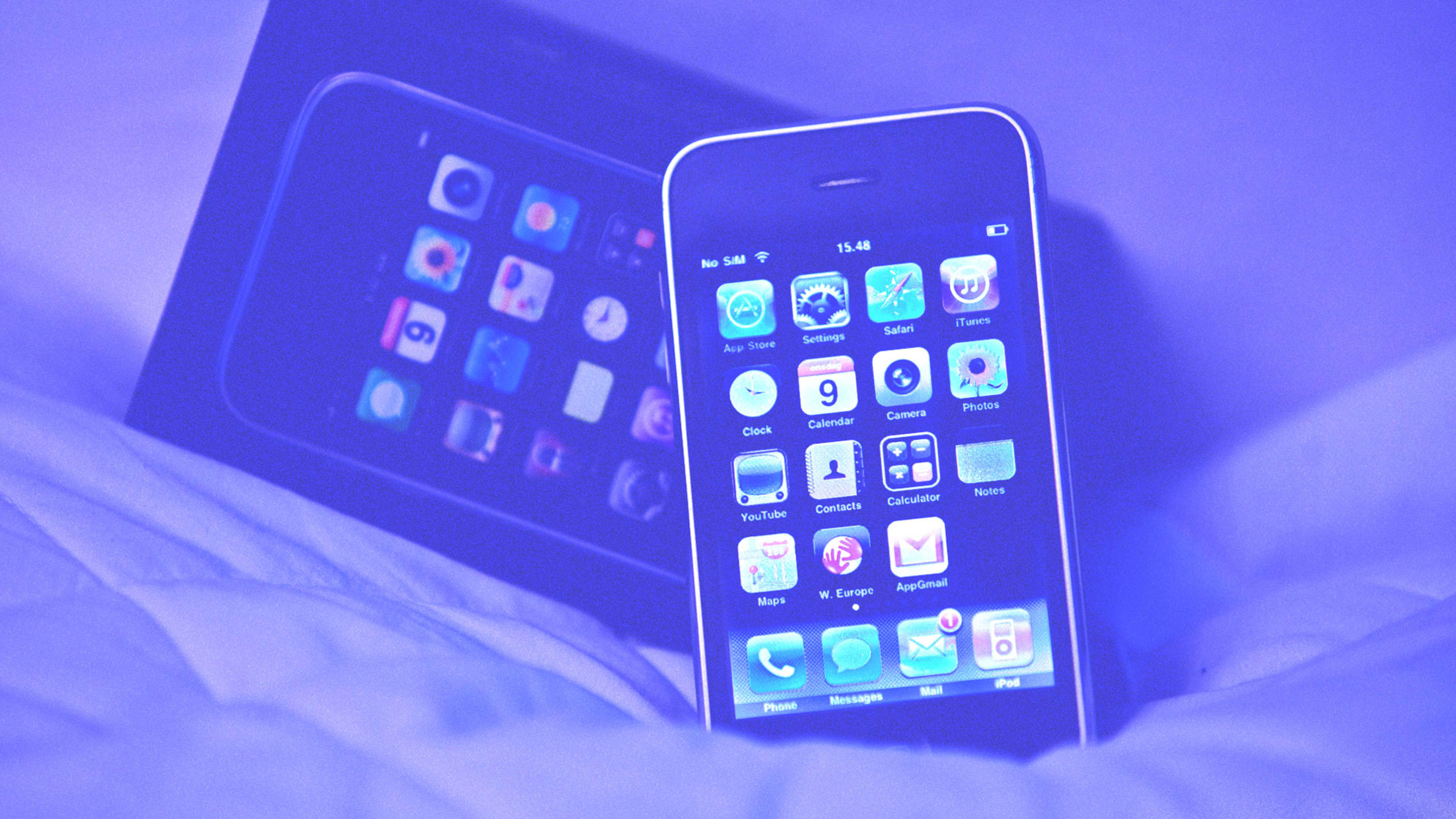Ten years ago, the iPhone App Store was just about a year old, and very much a Wild West in the world of software development.
Some software makers saw a chance to get rich quick with cheap gimmicks, while others made efforts to turn venerable websites or desktop programs into mobile apps. Others still came up with entirely new ideas that endure even now.
By looking back, we can learn a lot about how the App Store matured and evolved. Novelty apps that thrived when the iPhone itself was still a novelty eventually gave way to sophisticated games. Other apps proved so popular that Apple eventually built their features into iOS itself, effectively dooming them as stand-alone products. The ideas that have stuck around longest have either benefitted from the backing of tech giants, such as Google and Facebook, or have kept themselves fresh through years of feature updates.
To come up with this list, we used archive.org and its March 2009 snapshots of the app listing website AppShopper, compiling a list of the most popular 15 apps for both the free and paid categories. We chose this over Apple’s own “Best Apps” list from the time, because they better represent what people were doing with the App Store, rather than what Apple aspired for people to do. We also excluded games (they’re probably an article unto themselves), and ignored a couple of apps that were essentially clones of others.
Even if it’s been years since you’ve used any of these apps, you probably remember a lot of them. Here they are, starting at the bottom of AppShopper’s rankings and working our way upward to No. 1.
Free apps
15. MySpace Mobile
2009 App Store description: “If you love MySpace, you’re really going to love MySpace Mobile for iPhone. Simply download the free application to stay connected with your friends . . . anytime, anyplace!”
What it did: Allowed MySpace users to update their profiles, view friends’ status, manage friend requests, and more.
Last updated: May 7, 2015, per AppShopper
2019 status: Once-mighty MySpace was already heading downhill in 2009, so it might be forgiven for launching an app that looked like a rudimentary mobile website. Still, it’s possible to imagine an alternate reality in which MySpace anticipated the smartphone age and reinvented itself in time. Today, MySpace is technically still around, though its website is just a sad little hub for syndicated articles and embedded YouTube music videos.
14. iDie
2009 App Store description: “Next time someone wants you to waste time doing something you don’t like, whip this app out and explain to them that you have, say, only 17,147 days, 9 hours, 31 minutes, and 9 seconds left to live, and you simply cannot afford to waste any more of it.”
What it did: Used age and gender to calculate life expectancy according to the U.S. Social Security Administration’s Actuarial Life Table.
Last updated: March 11, 2009, per AppShopper
2019 status: The App Store was full of novelty apps like this in its early years, few of which have endured. Although developer Joseph Kumph went on to release several more, they’re all gone now, presumably due to the end of 32-bit app support. Kumph is now CEO of the office lunch automation service Forkable.
13. Whiteboard Lite
2009 App Store description: “Create unique art with this useful utility. Sometimes one person’s artistic skills aren’t quite enough. Combine your painting abilities with Whiteboard! It’s a fun app with many potential uses.”
What it did: Allowed two iPhone users to draw on a single canvas over Wi-Fi.
Last updated: May 17, 2015, per AppShopper
2019 status: GreenGar, the developer behind Whiteboard, shut down in 2014. Despite 15 million downloads and $1 million in total revenue, CEO Thuy Muoi said the company couldn’t figure out how to scale the business. The eventual rise of iOS productivity apps and subscription-based services might have helped, so perhaps Whiteboard was just ahead of its time. A lung cancer survivor, Muoi has since become the founder of a support group for cancer patients in Vietnam.

12. Virtual Zippo Lighter
2009 App Store description: “The Virtual Zippo Lighter opens with a flick of your wrist and lights with a turn of your thumb. The windproof flame sways as you move your iPhone or iPod Touch and reacts when you try to blow it out.”
What it did: Created a motion-sensitive flame atop a customizable virtual lighter.
Last updated: November 3, 2008, per AppShopper
2019 status: A perfect example of boom and bust in the App Store, Zippo’s virtual lighter app had reached 5 million downloads in 2009, and the company had big plans such as in-app purchases for lighter designs and listings for nearby concerts. (There’s no sign of the latter ever happening.) A decade later, Zippo’s app is much less ambitious–with no more in-app purchases–and it hasn’t been updated since 2016. The original developer, Skyrockit (formerly called Moderati), is also no longer involved, and appears to have pivoted from a branded entertainment agency to a developer outsourcing company.
11. Free Wi-Fi
2009 App Store description: “Why pay for Wi-Fi when there might be a free Wi-Fi spot near you? The Free Wi-Fi locator helps you find free Wi-Fi hotspots wherever you are.”
What it did: Provided locations and directions for thousands of Wi-Fi hotspots around the United States.
Last updated: December 1, 2010, per AppShopper
2019 status: While Wi-Fi hotspot finder apps are still around, this one may have perished in the 32-bit appocalypse as developer Youniversal Ideas moved onto other projects. Not that you need a Wi-Fi finder app anymore; your phone’s 4G LTE connection and built-in hotspot capabilities are probably faster and more secure than a random hotspot anyway.
10. The Weather Channel
2009 App Store description: “Leave it to The Weather Channel, the most trusted brand in weather, to deliver the perfect weather application for your active lifestyle!”
What it did: Offered weather forecasts and maps based on the user’s location.
Last updated: May 14, 2019, per the App Store
2019 status: Even in an age of voice commands and smart speakers, checking the weather through a dedicated app is an idea that endures, and so The Weather Channel remains one of the longest-running iPhone apps. Recently, however, we’ve started to see the downsides: In December, the New York Times reported that the app, which IBM acquired in 2015, was quietly analyzing users’ location data for hedge funds. (IBM says it’s ended that program, but its privacy policy now clarifies that it may share aggregated location data for commercial purposes.)
9. Lose It!
2009 App Store description: “Succeed at weight loss with Lose It! Set goals and establish a daily calorie budget that enables you to meet them.”
What it did: Let users count calories by listing the foods they’ve eaten and the exercises they’ve done.
Last updated: May 21, 2019, per the App Store
2019 status: Over the last 10 years, Lose It! has become a sustainable business with 35 million users and more than 500,000 premium subscribers who pay $40 per year for extra features like fitness tracker integration and nutritional insights. It’s probably no coincidence that Lose It! is one of the more substantial apps on this list.
8. Backgrounds
2009 App Store description: “You see a wallpaper background picture as you unlock iPhone or when you’re on a call with someone you don’t have a high-resolution photo for.”
What it did: Essentially served as a Flickr search engine, letting users download images to the Camera Roll. Due to iOS limitations at the time, users could only add custom wallpapers to the lock screen, while the home screen required a black background.
Last updated: March 21, 2014, per AppShopper
2019 status: Although developer Stylem Media eventually released iPad and Android versions, none of its apps are available anymore, and its website shows only a Node.js logo. Wallpaper apps are still around in 2019, but the best ones curate their own collections and communities instead of just hoovering up Flickr photos.
7. HearPlanet
2009 App Store description: “You’ll be amazed how easy it is to access all the landmarks, historic sites, cultural spots, nature areas, famous buildings, sports venues, recreation areas and more in a way that really speaks to you. It’s like having a docent or professional tour guide always by your side!”
What it did: Provided audio tours for thousands of destinations around the world.
Last updated: May 23, 2013, per the App Store
2019 status: The app is still available today–pre-iOS 7 design conventions and all–though it’s unclear what became of the developer. The HearPlanet website is nonresponsive, and its Facebook page abruptly stopped updating in 2013. The bigger business opportunity was there, though: A company called OnCell lets museums and other cultural sites create their own audio tours, and recently gobbled up a couple of competitors.
6. Flashlight
2009 App Store description: “Flashlight fills your screen with bright white light to illuminate your world when you find yourself in a dark spot or concert.”
What it did: Turned the screen white, because iPhones didn’t get an LED camera flash until the iPhone 4 in 2010.
Last updated: August 15, 2017, per the App Store
2019 status: Flashlight is still with us, with an App Store rating of 2.3 out of 5, and oddball features like strobe light modes, customizable screen colors, and color patterns. Still, you can file the entire flashlight category under “apps made mostly obsolete by native iOS features.” Users have been able to toggle the iPhone’s LED flash straight from Control Center since 2013.
5. Pandora Radio
2009 App Store description: “Pandora Radio is your own FREE personalized radio now available to stream music on your iPhone.”
What it did: Generated internet radio stations based on the sound profile of a given artist, song, or composer, back when that was still a novel idea.
Last updated: May 13, 2019, per the App Store
2019 status: Although Pandora was early to the idea of streaming music on smartphones, its devotion to the internet radio format caused it to sleep through the rise of on-demand streaming services like Spotify. (Pandora’s own on-demand offering only arrived in 2017.) In the meantime, Pandora struggled mightily as a public company, and it was acquired by SiriusXM last year. Still, it’s enduringly popular with music fans, and currently the third most popular free iPhone music app in Apple’s rankings.
4. iHandy Level Free
2009 App Store description: “This might be the most beautiful level you can get in hand. Unlike some other levels in app store, this one is fully functional with calibration capability. It’s accurate after calibrated. Enjoy!”
What it did: Used the iPhone’s accelerometer to emulate the physical tool for finding horizontal planes.
Last updated: May 16, 2017, per the App Store
2019 status: iHandy Level is proof that even a basic utility app can survive having its features duplicated by Apple, which offers a built-in level in the Measure app. iHandy’s free alternative is part of a larger suite of measurement tools that sells for $2 in the App Store, and is ranked 24th among utility apps. Now, the makers just have to hope Apple doesn’t add a plumb bob, protractor, and steel ruler.
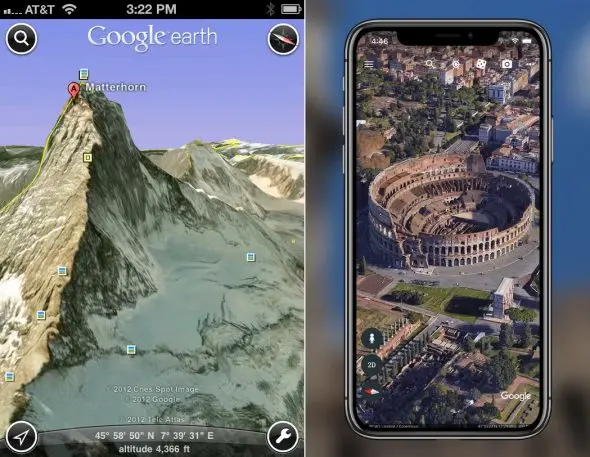
3. Google Earth
2009 App Store description: “Hold the world in the palm of your hand. With Google Earth for iPhone and iPod touch, you can fly to far corners of the planet with just the swipe of a finger.”
What it did: Provided the same satellite and aerial imagery as Google Earth’s desktop app, along with the ability to tilt the app up and down.
Last updated: April 15, 2019, per the App Store
2019 status: What once seemed somewhat like a novelty app has since become a powerful exploration tool with 360-degree views, informational cards, and VR support. Strategically, though, it’s not nearly as important as the many other iPhone apps that Google has since launched, including Gmail, Calendar, and (after being removed as a default app) YouTube.
2. Armory
2009 App Store description: “Take on the world with your very own multi-touch armory. Including pistol, sub-machine-gun, RPG, assault rifle, shotgun and sniper rifle and with multiple explosion sounds.”
What it did: Made gun noises.
Last updated: Unclear, but Archive.org last saved an AppShopper listing page in August 2009
2019 status: The fact that a generic sound effects app could climb this high in App Store rankings is a testament to our collective fascination with apps in general back in 2009. These days, we’ve presumably got better things to do; I can’t find a gun sound app that achieves any sort of App Store ranking.

1. Facebook
2009 App Store description: “Facebook for iPhone makes it easy to stay connected and share information with friends.”
What it did: Allowed Facebook users to view and post status updates, upload photos, and send Facebook Chat messages.
Last updated: May 23, 2019, per the App Store
2019 status: Facebook’s early success on mobile came despite a terrible web-based app, which the company replaced with a faster native version. A decade later, the company’s big bets on mobile have increasingly paid off, and the Facebook app seems more resilient than ever; despite more than a year of nonstop privacy and security scandals, Facebook remains the No. 3 Social Networking app on iOS as of this writing (topped only by Facebook Messenger and likely flash-in-the-pan YOLO).
Paid apps
15. AIM
2009 App Store description: “AIM® lets you stay connected with the people you care about right on your iPhone or iPod Touch. AIM is more than an instant messaging service—it’s a better way to connect.”
What it did: Let users exchange text messages with friends over Wi-Fi, Edge, or 3G networks.
Last updated: July 24, 2017, per AppShopper
2019 status: AOL Instant Messenger shut down for good in 2017, but it had already gone down as one of the biggest blown opportunities in tech years earlier. In hindsight, it’s easy to see how AIM had a huge head start on the likes of WhatsApp and Facebook Messenger, but AOL executives failed to recognize what they had, and let the service languish as newer social networks took hold.
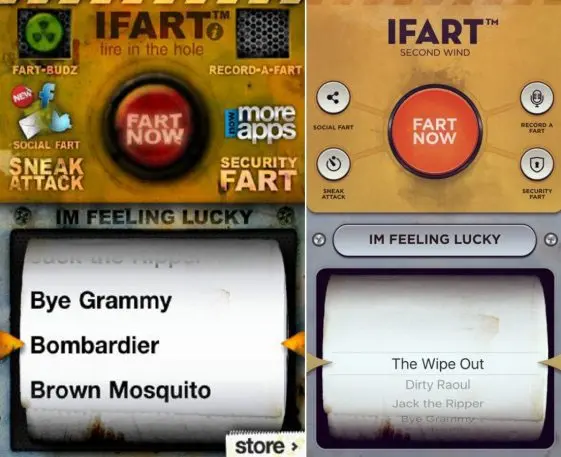
14. iFart Mobile
2009 App Store description: “iFart Mobile is the ORIGINAL Digital Sound Machine and entertainment system which brings endless laughs and enjoyment to its users.”
What it did: Simulated the passing of gas in a variety of tones and timbres.
Last updated: January 12, 2017, per the App Store
2019 status: Arguably the most enduring novelty app of all time, iFart Mobile ranks #46 in the App Store’s Entertainment category as of this writing. It’s also holding fast to its original up-front pricing of $1.99, even in an age of ads and in-app purchases. We could derive all kinds of lessons from the app’s continued success, from the importance of jumping on a trend early to the value of good marketing (a Jimmy Kimmel Live! segment featured the app just a year ago), but the overriding takeaway is that flatulence will never cease to be amusing.
13. Koi Pond
2009 App Store description: “Imagine gazing into a pond of crystal-clear water. Picture bright, playful koi swimming through its shallow depths. So close . . . Can you touch them?”
What it did: Simulated a koi pond with rippling water effects and fish that would react to your touch, along with relaxing sound effects.
Last updated: September 11, 2009, per AppShopper
2019 status: Although Koi Pond wasn’t exactly a game, the underlying concept eventually became gamified by apps like Pocket Pond, and the idea of relaxing with virtual fish likely became more niche as the iPhone’s game catalog blossomed. Meanwhile, its developers have moved onto other things, and the original app doesn’t seem to have survived the end of 32-bit app support.
12. iFitness
2009 App Store description: “iFitness is a comprehensive exercise database that provides clear pictures and instructions—all within the palm of your hand.”
What it did: Provided a list of workouts with photo instructions and an exercise log.
Last updated: December 15, 2010, per AppShopper
2019 status: Apple booted iFitness from the App Store in 2011, amid allegations that the developer had boosted the app’s rating with fake reviews and downloads. Shortly thereafter, the app returned under the name Full Fitness, and while it hasn’t been updated since December 2016, it still holds eighth place in the App Store’s Health & Fitness rankings. It’s one of the rare apps on this list whose core functionality–in this case, fitness tracking–has become more popular on iOS over time.
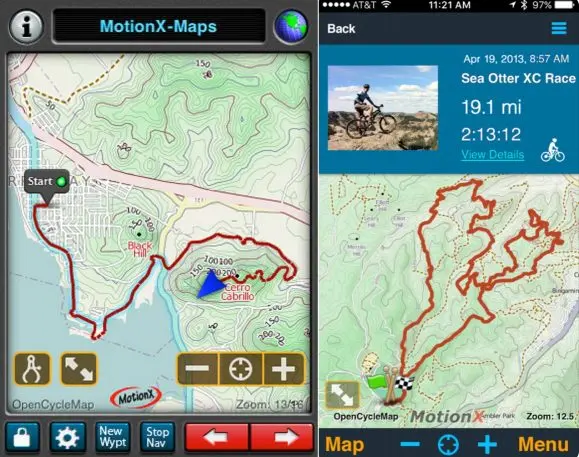
11. MotionX GPS
2009 App Store description: “MotionX-GPS is the leading GPS App for the iPhone. Over one million iPhone users have chosen MotionX. MotionX-GPS is for driving, biking, running, hiking, walking, geocaching, and sailing.”
What it did: Let users see where they’ve been on a map, navigate toward waypoints with a compass, and record other trail data such as travel time, pace, and altitude.
Last updated: October 24, 2017, per the App Store
2019 status: While the eventual arrival of Apple Maps and Google Maps spelled trouble for many third-party GPS apps, MotionX has stuck around by focusing on outdoorsy uses such as hiking, biking, and sailing. It’s currently fourth in the App Store rankings for Navigation apps.
10. iBeer
2009 App Store description: “This hilarious sight-gag is fully interactive and behaves like a real glass of beer thanks to the iPhone sensors and our spare time.”
What it did: Made users look kind of like they were drinking beer through their phones; also supported shaking the phone for foam and pouring beer from one phone to another.
Last updated: December 11, 2017, per the App Store
2019 status: Las Vegas-based Hottrix was a maker of stage props before striking gold in the App Store. And while other gimmick apps have come and gone since those early years, iBeer has stuck around, in part by taking imitators to court. (Hottrix sued Coors overs its iPint app in 2008, and sued Hersheys over a virtual chocolate milk app in 2010, and reached quick settlements in those cases.) To date, iBeer’s been downloaded more than 90 million times.
9. Get MMS
2009 App Store description: “Finally! The process to receive an MMS on the iPhone has been simplified. Start receiving MMS msgs now!!”
What it did: Helped users download multimedia text messages from AT&T’s website before the iPhone supported MMS natively.
Last updated: July 7, 2014, per AppShopper
2019 status: Get MMS falls squarely into the category of single-purpose apps made obsolete by iOS improvements. Apple added MMS support in June 2009 with iOS 3.0, and AT&T’s network was ready to handle it a few months later. Get MMS stuck around for a while after that, mainly for original iPhones that never got proper MMS support, but with no other notable features to speak of, its fate was effectively sealed.
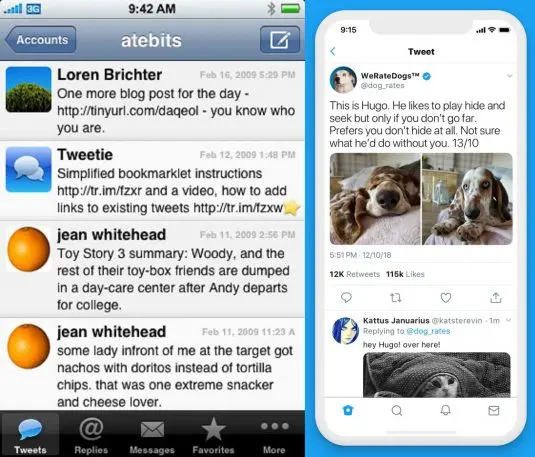
8. Tweetie
2009 App Store description: “Tweetie is a fast, full-featured twitter client for iPhone and iPod touch. It offers everything you’d expect—from your timeline to trends—all with an incredibly polished user interface, fantastic performance, and unparalleled ease-of-use.”
What it did: Let users access Twitter through a native mobile app before Twitter had one; introduced a “pull-to-refresh” gesture that’s become widely copied by other apps.
Last updated: July 1, 2009, per AppShopper
2019 status: The original Tweetie stopped receiving updates in 2009, but the second version, released as a separate app later that year, was acquired by Twitter and became the official Twitter app in 2010. These days, building unofficial Twitter clients isn’t nearly as fruitful, as developers can no longer include push notifications or auto-refreshing timelines. As for Tweetie creator, mobile-app design guru Loren Brichter, he left Twitter in late 2011.
7. PocketGuitar
2009 App Store description: “PocketGuitar turns your iPhone or iPod touch into a virtual guitar. You can press and strum strings, just like a real guitar.”
What it did: Simulated the guitar with a handful of different styles and effects.
Last updated: November 3, 2014, per the App Store
2019 status: The app is still around, and still sells for a buck, though it hasn’t really evolved over the last decade. It’s hard to say whether PocketGuitar would be more successful with more features, but the arrival of Apple’s own GarageBand on iOS probably renders it unnecessary for most amateur strummers.
6. Bikini Blast
2009 App Store description: “What a BLAST! Bikini Blast gives you hundreds of sizzling bikini wallpaper for your iPhone, with new photos added every day.”
What it did: Provided racy photos (“properly licensed and used with permission from the copyright holder”) for download.
Last updated: September 10, 2009, per AppShopper
2019 status: Bikini Blast was likely swept up in the great bikini app ban of 2010, which no longer allowed for apps with “overtly sexual content.” While Apple carved out some exceptions for major media companies, it was effective in keeping sleaze out of the App Store’s top download charts.
5. iGirl
2009 App Store description: “Have your own virtual girl friend on your iphone for less than the price of a cup of coffee or a beer, and shake her around!”
What it did: Displayed a 3D model of a female that would dance and talk in response to gestures and touches. It had the distinction of being named one of the worst iPhone apps of all time by Appolicious in 2010.
Last updated: January 10, 2011, per AppShopper
2019 status: Despite–or perhaps because of–some negative press coverage, iGirl boasted of more than 50,000 downloads in early 2009. Still, mediocrity might be as much to blame as creepiness for the app’s eventual downfall. Whenever it was that iGirl left the App Store, no one seemed to notice.
4. Shotgun Pro
2009 App Store description: “Now you too can keep a pistol grip pump on your lap at all times, with SHOTGUN PRO. Choose from five unique shotguns in the armory, pump your iPhone or iPod touch back and forth to cock, then jerk your hand up to compensate for the massive recoil. Lock and load, baby.”
What it did: Made shotgun sounds.
Last updated: May 15, 2012, per AppShopper
2019 status: Over time, Shotgun Pro tried to spruce itself up with achievements and unlockable items, but gun sound apps just don’t have the appeal that they used to. That said, the free version of this app is still around. (It also hasn’t been updated since 2012.)
3. CBS Sports NCAA March Madness On Demand
2009 App Store description: “For the first time ever starting March 19, CBS Sports Mobile: NCAA® March Madness on Demand® (MMOD) is STREAMING EVERY GAME ON WI-FI from the first round to the NCAA® Championship LIVE.”
What it did: Streamed live video and audio of the NCAA Men’s Basketball tournament.
Last updated: March 12, 2009, per AppShopper
2019 status: This app wouldn’t have made the ranks if our snapshot of App Store rankings didn’t happen to be from March 2009, but it still provides a look at how sports streaming apps have changed over the last decade. The app’s $5 price would be unheard of now, as would the Wi-Fi-only requirement for live video. But perhaps more importantly, TV networks have become more skittish about giving March Madness streams away. In 2019, you had to log in with a pay TV provider to watch more than a few hours of coverage.
2. Textfree Unlimited
2009 App Store description: “SEND FREE TEXTS from an iPod touch or iPhone to any US mobile phone. Replies come free too!”
What it did: Let users send messages to other Textfree users with just a tiny amount of mobile data, back when more people paid for SMS on a per-message basis.
Last updated: March 2, 2011, per AppShopper
2019 status: Ten years ago, texting was so overpriced that people were willing to pay $6 just to escape carrier SMS fees. And while carriers eventually wised up and started including unlimited texts with most plans, dedicated messaging services have stuck around to fill other holes in the SMS experience. Textfree eventually replaced its old apps (which included free and premium options) with a single free app, which remains available today. Its most notable feature is the ability to pick a phone number.
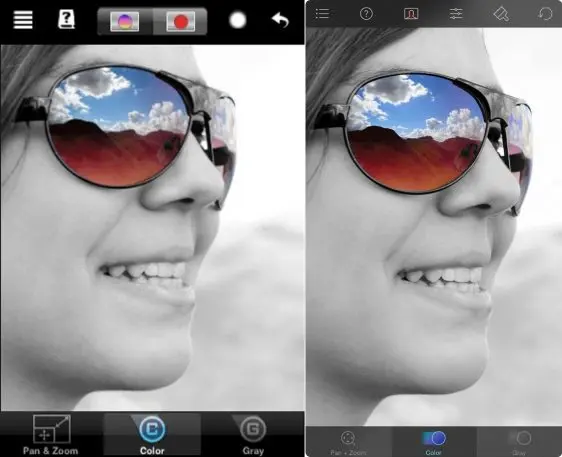
1. ColorSplash
2009 App Store description: “ColorSplash lets you quickly and easily give photos a dramatic look by converting them to black and white, while keeping your chosen details in color.”
What it did: Turned photos to black and white, then let users brush over an area to restore color.
Last updated: December 15, 2018, per the App Store
2019 status: It’s fitting that this list ends on an item that exemplifies what the App Store does best. With simple, affordable software Color Splash, it democratized the kinds of effects that once required a Windows PC or Mac and some Photoshop skills. That–along with a steady drumbeat of software updates–may explain why, 10 years later, it’s still available, with an App Store ranking of 32nd among Photo and Video apps.
Recognize your brand’s excellence by applying to this year’s Brands That Matter Awards before the early-rate deadline, May 3.
